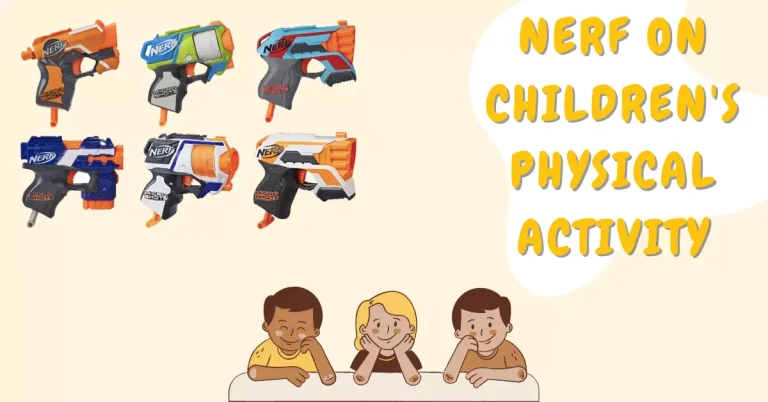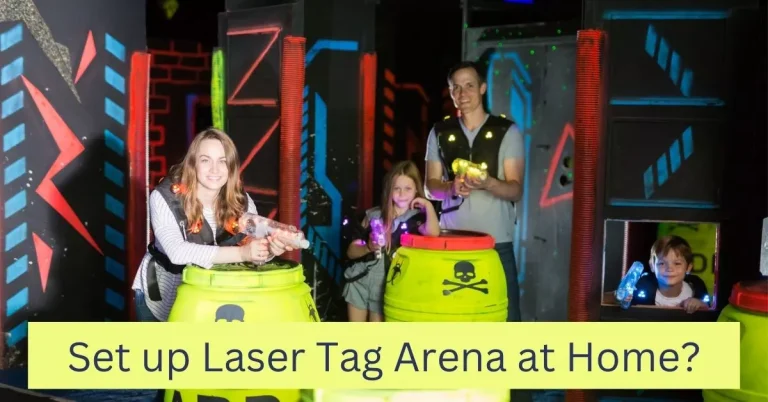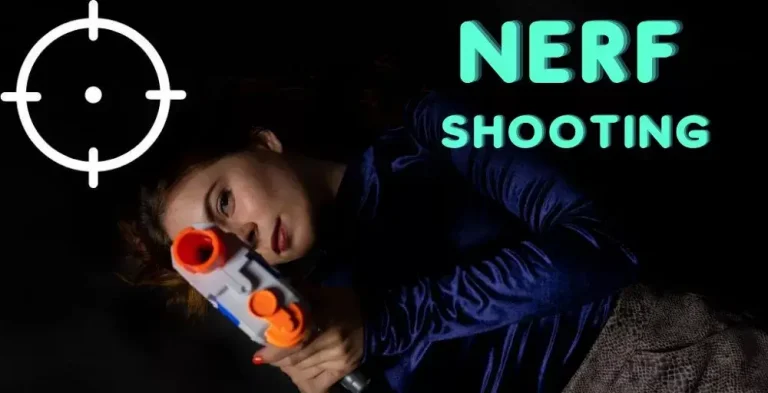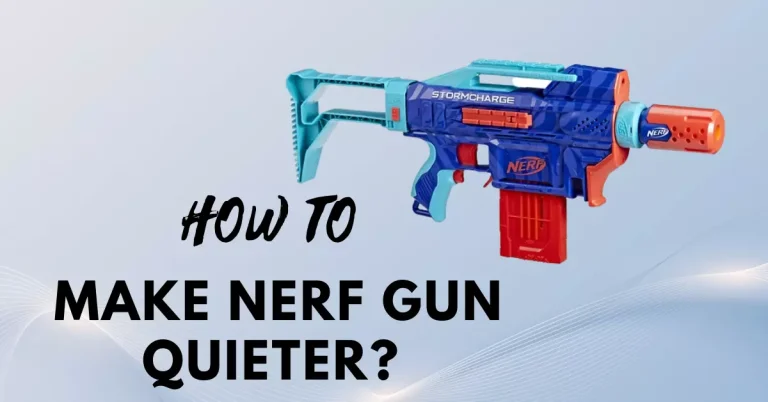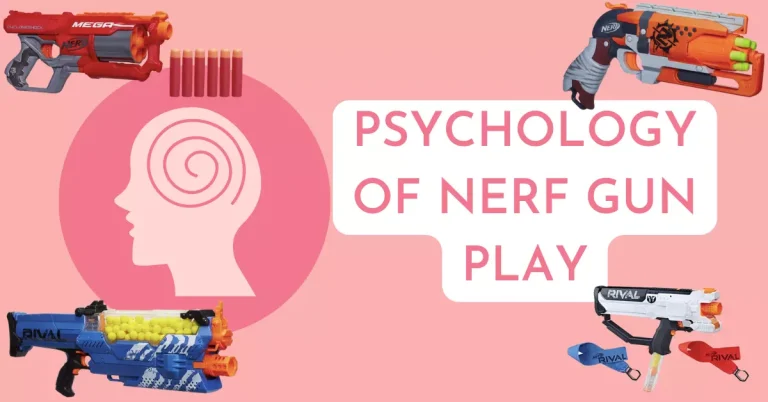Competitive Nerf: Rules, Leagues, and How to Get Started
What began as casual backyard battles with foam darts has evolved into a thriving competitive sport with organized leagues, standardized rules, and dedicated players around the world. Competitive Nerf has grown from informal neighborhood games to structured tournaments that test players’ skills, strategy, and equipment knowledge.
Whether you’re a casual player looking to take your hobby to the next level or a parent whose child is showing interest in competitive play, this guide will provide you with the knowledge and resources to navigate the exciting world of competitive Nerf.
The sport continues to grow each year, with new leagues forming and existing organizations expanding their reach, making this an excellent time to get involved.
The Evolution of Competitive Nerf
From Backyard Battles to Organized Sport
Competitive Nerf has undergone a remarkable transformation since Hasbro first introduced Nerf blasters in the late 1960s. What started as simple foam ball toys evolved into increasingly sophisticated dart blasters in the 1990s and 2000s. As blaster technology improved, enthusiasts began organizing more structured games beyond casual play.
By the 2010s, local groups started establishing consistent rules and game formats. Social media platforms and forums allowed these communities to connect, share ideas, and standardize gameplay. The COVID-19 pandemic temporarily halted in-person events but led to an explosion of interest as people sought outdoor activities when restrictions eased.
Today in 2025, competitive Nerf has established regional and national tournaments, dedicated playing facilities in major cities, and even professional players who compete for substantial prize pools. The sport has developed its own culture, terminology, and community standards while remaining accessible to newcomers of various ages and skill levels.
Key Milestones in Competitive Nerf History
- 2010-2012: First documented local leagues form in university settings
- 2013-2015: Regional tournaments begin to standardize rules across different localities
- 2016-2018: First national championship events held in the US, UK, and Australia
- 2019-2020: Pandemic pause leads to equipment innovation and online community growth
- 2021-2023: Post-pandemic boom with major sponsorships and dedicated venues
- 2024-2025: Emergence of professional circuits and standardized international rule sets
Understanding Competitive Nerf Formats
Competitive Nerf encompasses several distinct game formats, each with its own objectives, rules, and strategies. Most leagues and tournaments feature multiple formats to test different skills.
Capture the Flag
The classic objective-based format remains one of the most popular in competitive play.
Basic Rules:
- Two teams each defend a flag (or similar object) while attempting to capture the opponent’s flag
- Players hit by darts are typically “stunned” for a set period (often 15-30 seconds) before returning to play
- First team to capture the opponent’s flag a set number of times (usually 3) wins
- Matches typically last 15-20 minutes with a time limit
Strategic Elements:
- Role specialization (defenders, runners, support)
- Coordinated pushes and diversionary tactics
- Resource management (ammunition conservation)
Team Elimination
A straightforward format focused on eliminating opposing players.
Basic Rules:
- Players are eliminated when hit by a dart
- Last team with players remaining wins
- Rounds typically last 5-10 minutes
- Often played as best-of-three or best-of-five series
Strategic Elements:
- Cover utilization and movement
- Target prioritization
- Flanking maneuvers
King of the Hill
A dynamic format centered around controlling territory.
Basic Rules:
- Teams compete to control a designated area (the “hill”)
- Points accumulate while a team maintains uncontested control
- Players hit by darts are typically stunned rather than eliminated
- Team with the most points after a set time (usually 10-15 minutes) wins
Strategic Elements:
- Defensive formations
- Rotation strategies to maintain fresh defenders
- Coordinated assault timing
Humans vs. Zombies (HvZ)
A scenario-based format (HvZ) popular on college campuses and at larger events.
Basic Rules:
- Players start as either humans or zombies (usually a small initial zombie population)
- Zombies tag humans to convert them to the zombie team
- Humans use Nerf blasters to stun zombies temporarily
- Game continues until all humans are converted or humans complete objectives
- Can last from hours to days depending on the event scale
Strategic Elements:
- Supply management for humans
- Horde coordination for zombies
- Safe zone utilization and mission planning
Specialty Formats
Beyond these standard formats, competitive Nerf has developed several specialty game types:
- Speedball: Fast-paced elimination on symmetrical fields with minimal cover
- Rival League: Competitions specifically using Nerf Rival high-velocity round-based blasters
- Scenario Play: Extended games with complex objectives and storylines
- Dart Tag: Precision-focused competitions emphasizing accuracy over elimination
Official Rules and Regulations
While rule variations exist between different leagues and regions, competitive Nerf has developed increasingly standardized regulations. Here are the core elements found in most official rulebooks:
Safety Regulations
Safety remains the top priority in competitive Nerf:
- Eye Protection: Mandatory for all players, typically ANSI Z87.1 rated or better
- Velocity Limits: Most leagues cap dart velocity at 130-150 feet per second (fps)
- Chronograph Testing: Blasters are tested before events to ensure compliance
- Dart Inspection: Only approved dart types allowed (typically stock or approved third-party)
- Field Safety: Boundaries clearly marked, hazards removed, and safe zones designated
- Referees: Trained officials monitor gameplay and enforce safety rules
Equipment Standards
Competitive Nerf has established equipment categories and standards:
- Stock Class: Unmodified blasters using standard darts
- Modified Class: Internally upgraded blasters with performance enhancements
- Unlimited Class: Heavily modified blasters with few restrictions
- Specialty Divisions: Categories for Rival, Mega, or other specific ammunition types
Most leagues require:
- Blaster inspection before play
- Visible team identification (armbands, jerseys, etc.)
- Standardized ammunition for fairness
- Limits on capacity and number of blasters carried
Player Conduct
Competitive Nerf emphasizes sportsmanship and fair play:
- Honor System: Players expected to acknowledge when hit
- Dispute Resolution: Referee system for addressing disagreements
- Sportsmanship Requirements: Respectful conduct toward opponents and officials
- Penalties: Systems for addressing rule violations, from warnings to disqualification
- Age Divisions: Separate competitions for different age groups to ensure fair play
Major Leagues and Organizations in 2025
The competitive Nerf landscape includes several prominent organizations that host regular events:
North American Foam Dart League (NAFDL)
The largest organized competitive circuit in North America.
- Structure: Regional qualifiers feeding into national championships
- Divisions: Youth (8-13), Teen (14-17), and Adult (18+)
- Formats: Standardized ruleset across all sanctioned events
- Season: March through October with championships in November
- Notable Events: Summer Series Open, East/West Regionals, National Championship
European Dart Sport Federation (EDSF)
The premier European organization for competitive Nerf.
- Structure: Country-based leagues with European championship
- Divisions: Based on age and experience level
- Formats: Emphasis on objective-based gameplay
- Season: February through September
- Notable Events: EuroDart Cup, National Championships, International Invitational
Asia-Pacific Foam Sports Association (APFSA)
The fastest-growing competitive organization, centered in Australia, Japan, and Singapore.
- Structure: City-based teams competing in regional conferences
- Divisions: Open and Junior divisions
- Formats: Innovative game types with traditional formats
- Season: Year-round competition with seasonal championships
- Notable Events: Pacific Rim Challenge, Singapore Open, Tokyo Invitational
Independent Tournament Circuits
Beyond the major leagues, several independent circuits host prestigious events:
- Foam Pro Tour: Professional-level competition with substantial prize pools
- University Foam League: Collegiate competition across major universities
- Dart Warriors Series: Accessible tournaments focused on new players
- Endwar: The largest annual scenario game, drawing players internationally
Finding Local Events and Communities
Getting involved in competitive Nerf starts with connecting to your local community:
Online Resources
- Nerf-related Subreddits: r/Nerf, r/CompetitiveNerf, and regional subreddits
- Facebook Groups: Search for “[Your City/Region] Nerf” or “Foam Dart Society”
- Discord Servers: Many communities coordinate through dedicated Discord channels
- League Websites: Major organizations maintain event calendars and team directories
- Meetup.com: Search for Nerf, foam dart, or blaster tags
Physical Locations
Competitive Nerf events typically occur at:
- Dedicated Arenas: Purpose-built facilities for Nerf competitions (increasingly common in major cities)
- Community Centers: Rented spaces for regular meetups
- Parks: Public spaces with permits for organized play
- College Campuses: Many universities have active Nerf clubs
- Airsoft/Paintball Fields: Some facilities offer dedicated times for Nerf events
Starting Your Own Community
If no local group exists, consider starting one:
- Establish Basic Rules: Adapt standard formats to your available space
- Find a Venue: Secure permission for regular meetups
- Recruit Players: Advertise through social media, local game stores, and community boards
- Start Small: Begin with casual games before implementing competitive formats
- Connect with Established Groups: Reach out to nearby communities for guidance
Preparing for Your First Tournament
Essential Equipment
Before attending your first competitive event, ensure you have:
- Primary Blaster: A reliable, competition-legal primary weapon
- Secondary Blaster: A backup for when your primary needs reloading
- Eye Protection: ANSI Z87.1 rated safety glasses or goggles
- Ammunition: More darts than you think you’ll need (200+ recommended)
- Tactical Gear: Dart holders, pouches, or tactical vest for carrying extra ammunition
- Comfortable Clothing: Breathable attire suitable for active movement
- Water Bottle: Staying hydrated is crucial during extended play
- Team Identification: Armbands, bandanas, or jerseys if team play is involved
Understanding Tournament Structure
Most competitive events follow a similar structure:
- Registration and Check-in: Arrive early to complete paperwork and equipment inspection
- Chronograph Testing: Blasters are tested to ensure they meet velocity limits
- Rules Briefing: Overview of event-specific regulations and gameplay
- Preliminary Rounds: Initial matches to determine seeding or advancement
- Elimination Brackets: Single or double elimination tournament format
- Finals: Championship matches between top performers
Basic Strategies for Beginners
Success in competitive Nerf requires more than just accurate shooting:
- Communication: Coordinate with teammates using clear, concise callouts
- Movement: Stay mobile rather than stationary to avoid becoming an easy target
- Ammunition Management: Reload strategically during lulls in action
- Cover Utilization: Learn to use available cover effectively
- Target Prioritization: Focus fire on the most immediate threats
- Role Understanding: Know your function within the team strategy
- Map Awareness: Learn field layouts and high-traffic areas
Training and Skill Development
Improving your competitive performance requires dedicated practice:
Accuracy Training
- Target Practice: Set up targets at various distances for regular practice
- Moving Targets: Practice shooting at moving objects to simulate real gameplay
- Snap Shooting: Work on quickly aiming and firing from behind cover
- Weak Hand Training: Develop proficiency with your non-dominant hand
Physical Conditioning
Competitive Nerf is physically demanding:
- Cardiovascular Endurance: Regular cardio training improves stamina during extended matches
- Agility Drills: Practice quick direction changes and movements between cover
- Flexibility: Maintain mobility for crouching, diving, and unusual firing positions
- Recovery: Proper rest and nutrition between events prevents burnout
Mental Preparation
The psychological aspect is equally important:
- Stress Management: Learn to make decisions under pressure
- Situational Awareness: Practice tracking multiple elements simultaneously
- Strategic Thinking: Study game theory and tactical principles
- Adaptability: Develop the ability to change strategies mid-game
Blaster Selection and Optimization
Your equipment choices significantly impact competitive performance:
Selecting the Right Primary Blaster
Consider these factors when choosing your main blaster:
- Reliability: Consistent performance without jams or misfires
- Rate of Fire: How quickly you can deploy multiple darts
- Accuracy: Consistency of dart placement at various ranges
- Ergonomics: Comfort during extended use
- Capacity: Ammunition storage without frequent reloading
- Weight: Balance between durability and mobility
Popular competitive primary blasters in 2025 include:
- Nerf N-Series Agility (for stock class)
- Dart Zone Pro MK-4 (for modified class)
- Nerf Rival Perses (for Rival division)
- Custom-built Caliburn (for unlimited class)
Secondary Blaster Considerations
Your backup blaster should complement your primary:
- Quick Draw: Fast deployment when primary is empty
- Simplicity: Reliable function with minimal complexity
- Compatibility: Uses same ammunition as primary when possible
- Size: Easily carried without hindering movement
Popular secondary options include:
- Nerf N-Series Vigilance
- Dart Zone Mk 2
- Compact Rival blasters
Legal Modifications
Understanding permitted modifications is essential:
- Spring Replacements: Upgraded main springs for increased power
- Seal Improvements: Better o-rings and plunger tubes for efficiency
- Barrel Modifications: Optimized barrels for improved accuracy
- Trigger Adjustments: Reduced pull weight for faster response
- Tactical Rails: Added attachment points for accessories
Always check specific league rules, as permitted modifications vary between organizations.
The Competitive Nerf Community
Beyond the gameplay itself, the competitive Nerf community offers many opportunities for engagement:
Content Creation
Many competitors contribute to the community through:
- YouTube Channels: Tutorials, gameplay footage, and equipment reviews
- Podcasts: Discussion of strategy, events, and community news
- Blogs and Forums: Detailed analysis and modification guides
- Social Media: Sharing experiences and connecting with other players
Designing and Modding
The technical side of competitive Nerf includes:
- Custom Parts: 3D printing specialized components
- Blaster Painting: Aesthetic customization for team identification
- Electronics Integration: Adding ammo counters, chronographs, or other features
- Complete Custom Builds: Designing blasters from scratch
Mentorship and Coaching
Experienced players often help newcomers through:
- Training Sessions: Organized practice with feedback
- Strategy Development: Helping teams create effective game plans
- Equipment Advice: Guidance on blaster selection and optimization
- Rules Interpretation: Explaining nuances of competitive regulations
The Future of Competitive Nerf
As we look beyond 2025, several trends are shaping the future of the sport:
Technological Advancements
- Smart Blasters: Integration of hit detection and scoring systems
- Performance Metrics: Data analysis of player movements and accuracy
- VR Training: Simulation systems for practice and strategy development
- Biodegradable Ammunition: Environmentally friendly dart options
Organizational Development
- Professional Leagues: Full-time competitive players with sponsorships
- Broadcast Partnerships: Streaming and television coverage of major events
- International Standardization: Global ruleset adoption
- Youth Development Programs: Structured training for young players
Community Growth
- Dedicated Venues: Purpose-built competitive arenas in more cities
- Academic Recognition: School-sponsored teams and competitions
- Cross-Promotion: Partnerships with other recreational sports
- Accessibility Initiatives: Programs to make the sport available to all
Conclusion
Competitive Nerf represents the evolution of a beloved toy into a legitimate sport with dedicated players, established rules, and organized competitions. Whether you’re drawn to the strategic depth, the community aspect, or simply the joy of foam dart battles, the competitive scene offers something for everyone.
By understanding the formats, connecting with your local community, and preparing properly for events, you can transform casual play into a rewarding competitive experience. The sport continues to grow and evolve, with new opportunities emerging for players of all skill levels and backgrounds.
As you begin your journey into competitive Nerf, remember that the fundamental purpose remains enjoyment. While competition adds structure and challenge, the heart of the sport is still the simple pleasure of Nerf battles—now enhanced by shared experiences, skill development, and community connection.
Frequently Asked Questions
Q: What age is appropriate to start competitive Nerf? A: Most leagues offer divisions starting at age 8, with junior divisions typically running from 8-13 years. Adult supervision is recommended for younger players.
Q: How expensive is it to get started in competitive play? A: Entry-level competitive equipment can be assembled for $50-100, including a primary blaster, eye protection, and ammunition. More advanced setups can range from $150-300+.
Q: Do I need to modify my blasters to be competitive? A: Many leagues offer “stock” divisions where unmodified blasters are used. For higher-level play, basic modifications are common but not strictly necessary to begin participating.
Q: How physically demanding is competitive Nerf? A: The intensity varies by format. Some games involve significant running and quick movements, while others focus more on strategy and positioning. Most events include breaks between rounds.
Q: Are there opportunities for non-players to get involved? A: Absolutely! The community needs referees, event organizers, content creators, and technical specialists. Many enthusiasts contribute without actively competing.
Q: How can I find tournaments in my area? A: Check social media groups, the r/Nerf subreddit, league websites, and local hobby shops. If no events exist nearby, consider organizing casual meetups to gauge interest in your community.

I am a Nerf gun fan, researcher and modder. I post reviews about Nerf blasters and also share tips to solve issues with your toy guns.


